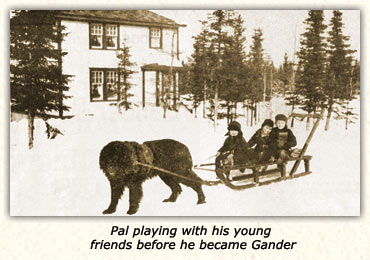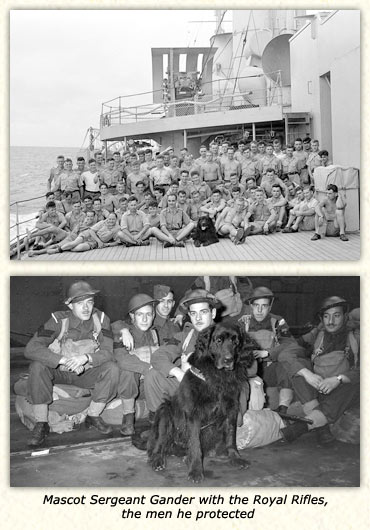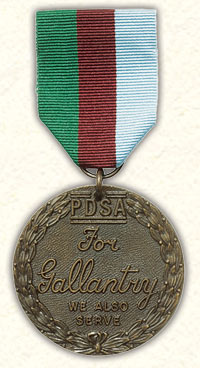![]()
Library Extras
"Beyond the Call of Duty" by Brenda Moore
We are happy to announce that Brenda Moore has won the 2012
International Reading Association Paul A. Witty Short Story Award for this exciting story, which appeared in the January 2011 issue of Cricket.
~~~
 Rod Hayden stared down at the mass of black fur lying at his feet. What was he to do? Pal, the family dog, had grown so big. Too big. It was 1940, and in the remote Canadian town of Gander, Newfoundland, Pal was a friend to everyone. The 130-pound Newfoundland dog loved to romp with the neighborhood children. He even pulled their sleds in winter. But today the playful giant had accidentally scraped the face of a six-year-old girl. As Pal’s owner, Hayden felt upset and responsible. Now he wrestled with a terrible question of what to do about his massive, energetic pet. He even wondered if Pal should be put down.
Rod Hayden stared down at the mass of black fur lying at his feet. What was he to do? Pal, the family dog, had grown so big. Too big. It was 1940, and in the remote Canadian town of Gander, Newfoundland, Pal was a friend to everyone. The 130-pound Newfoundland dog loved to romp with the neighborhood children. He even pulled their sleds in winter. But today the playful giant had accidentally scraped the face of a six-year-old girl. As Pal’s owner, Hayden felt upset and responsible. Now he wrestled with a terrible question of what to do about his massive, energetic pet. He even wondered if Pal should be put down.
Thankfully, a better solution was found. Soldiers at RCAF Station Gander, the air base, knew Pal well. Their exuberant friend loved to chase after landing airplanes. Unsuspecting pilots often radioed in that there was a bear on the runway! When Hayden offered Pal to the soldiers, they eagerly accepted, and Pal became regimental mascot for the 1st Battalion of the Royal Rifles of Canada. The soldiers renamed him Gander and quickly promoted him to the rank of sergeant.
World War II had broken out in Europe the previous year, and tiny Gander, located at the eastern tip of Canada, had suddenly swelled into one of the busiest airports in the world, a vital staging and refueling point for thousands of Canadian and American planes bound for Europe. Although the Royal Rifles had been sent from Quebec to defend the base from possible German attack, no one expected the battalion ever to face dangerous combat.
In 1941, that changed. On the other side of the world, Japan had conquered most of China and was now posing a threat to the British Crown Colony of Hong Kong on China’s southern coast. The Royal Rifles were ordered to join other British Common-wealth troops to defend the island should war break out with Japan.
At a farewell parade in Quebec City, thousands of people cheered the Royal Rifles as they marched proudly behind Sergeant Gander. But the battalion ran into trouble in Vancouver as it tried to board the transport ship for Hong Kong. When the crew of the Prince Robert saw Gander trotting along the wharf, they did not believe he was a dog. “You can’t take that bear on this boat!” the captain ordered. But the Royal Rifles refused to back down. They could not leave their mascot behind!
The Royal Rifles arrived in Hong Kong on November 16, 1941. The climate was very warm for a dog with thick, heavy fur. For relief, his handler, Rifleman Fred Kelly, would let Gander sit in the shower as long as he liked, blissfully soaking up the cool spray. Gander also developed a taste for beer, which he lapped up, right out of the sink. At night, he made it clear he did not like his doghouse, howling until he was brought in to sleep by Kelly’s bed. This was where Gander belonged, alongside his fellow soldiers.
 On December 7, 1941, the Japanese bombed the American fleet at Pearl Harbor and, eight hours later, invaded Hong Kong. The surprise attacks threw the Royal Rifles into a desperate fight against an overwhelming Japanese invasion force.
On December 7, 1941, the Japanese bombed the American fleet at Pearl Harbor and, eight hours later, invaded Hong Kong. The surprise attacks threw the Royal Rifles into a desperate fight against an overwhelming Japanese invasion force.
As a big, friendly pet, Gander might not have been expected to be of use in the frenzy of battle. But the lovable Newfoundland had a strong drive to protect. When confronted by the enemy, he transformed into a fearsome fighter. “He growled and ran at the enemy soldiers, biting at their heels,” recalls Rifleman Reginald Law. When a group of injured Canadian soldiers could not escape the approaching Japanese, Gander lunged out ferociously and drove off the enemy. Weeks after the battle, the Japanese closely questioned Canadian POWs about the ferocious “black beast.” They feared the Allies were training giant animals for warfare.
Gander’s final heroic act occurred on December 19, just after midnight, during the Battle of Lye Mun. It was pitch-dark, and Fred Kelly had put Gander in a concrete shelter called a pillbox, where he would be cool and safe. Suddenly, the Japanese attacked. In the chaos, Gander escaped from his pillbox and, showing no fear of guns or bombs, ran straight toward the enemy. “Gander must have seen the hand grenades landing,” says Jeremy Swanson of the Canadian War Museum. “He must have seen the men furiously throwing them back. He must have sensed their terror.” On a hillside, seven Canadians were lying wounded when a Japanese grenade landed in their midst. Gander rushed in, grabbed the grenade, and ran away with it in his mouth until it exploded. The lives of the seven men had been saved, but as Reginald Law remembers, “When the firing eased up, I saw Gander lying dead in the road.” The next morning, the Canadians were marched away to captivity. Fred Kelly could see Gander’s body in the distance. “I didn’t go near, I was so distraught.” His courageous friend had made the ultimate sacrifice.
Of the 1,975 Canadians who went to Hong Kong, nearly 500 were wounded, 290 were killed in the battle, and 264 died as Japanese POWs. During four years of harsh and brutal captivity, the Royal Rifles often shared the story of Gander, which helped inspire them to keep going during this terrible time. Long after the war, the Hong Kong veterans happened to mention Gander to commemorating officer Jeremy Swanson, who spent several years documenting the story. Through his efforts, the PDSA Dickin Medal, also known as the animals’ Victoria Cross for conspicuous bravery against the enemy, which had not been awarded since 1949, was brought back for the special case of Gander. In October 2000, Fred Kelly, with a Newfoundland dog at his side, gratefully accepted the medal honoring Gander’s courage and loyalty.
For the Hong Kong veterans, their mascot represented them and all they had endured. When the Hong Kong Memorial Wall was unveiled in 2009 in Ottawa, Ontario, they insisted that Gander’s name be included, where he could forever be remembered, alongside the soldiers he had served.
 NOTE
NOTE
Introduced in 1943 by Maria Dickin, who founded the People’s Dispensary for Sick Animals, a British veterinary charity, the PDSA Dickin Medal honors public service animals who have shown exceptional courage and devotion to duty in saving human life during war. To date, 32 pigeons, 3 horses, 27 dogs, and one cat have received the award. Gander’s certificate reads in part: “For saving the lives of Canadian infantrymen during the Battle of Lye Mun on Hong Kong Island in December 1941. ... Twice Gander’s attacks halted the enemy’s advance and protected groups of wounded soldiers. In a final act of bravery, the war dog was killed in action gathering a grenade. Without Gander’s intervention many more lives would have been lost in the assault.”


